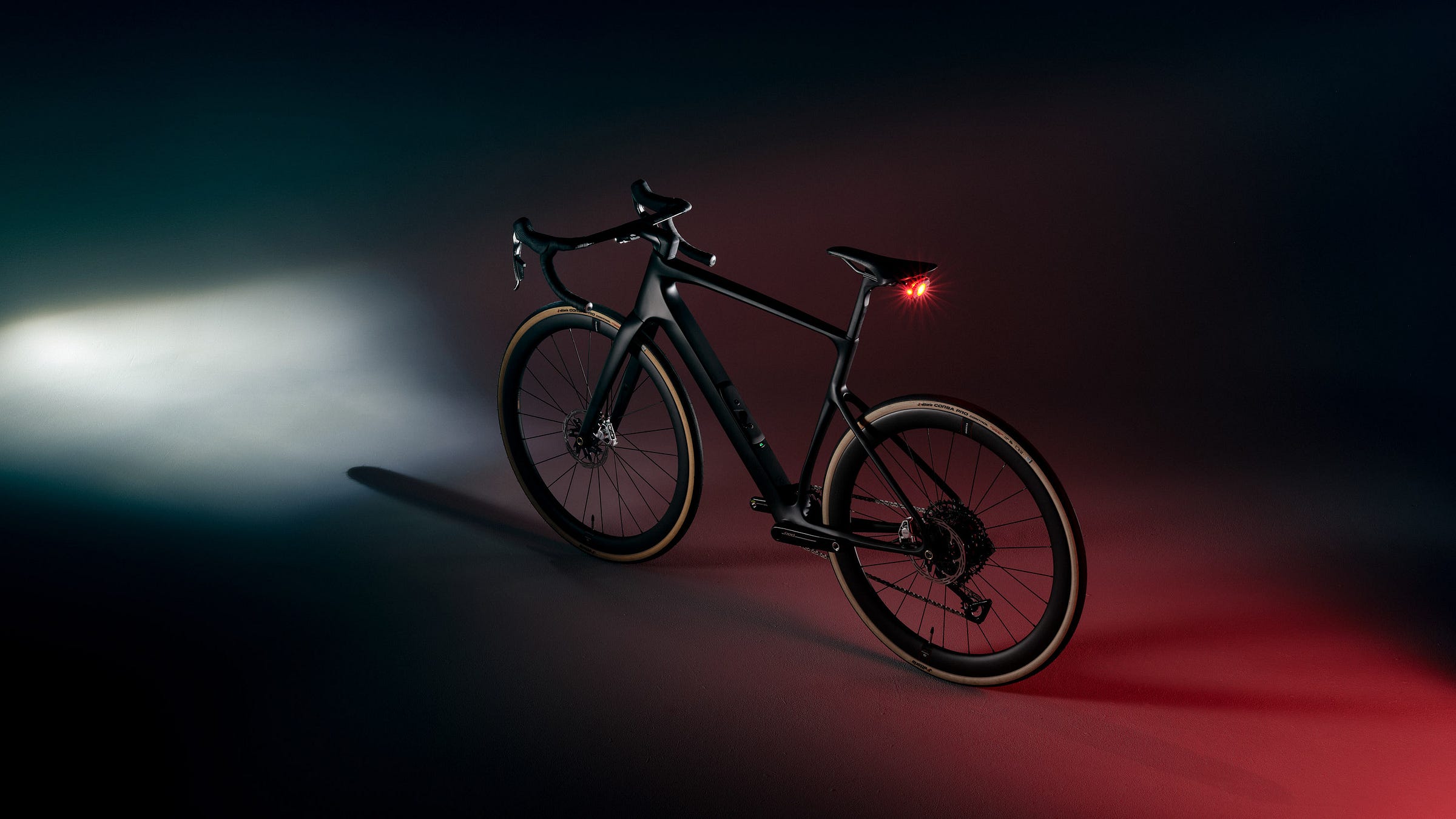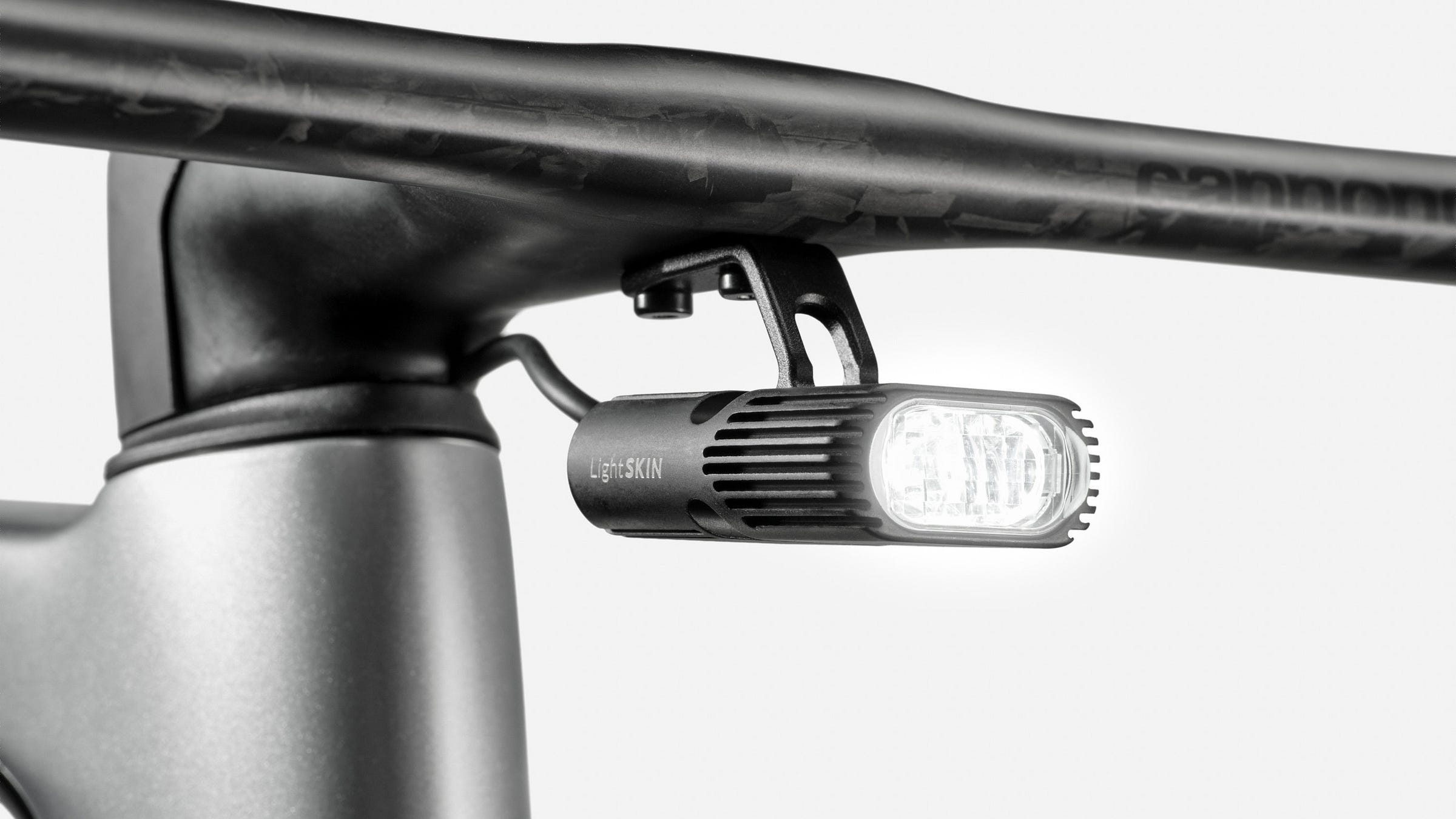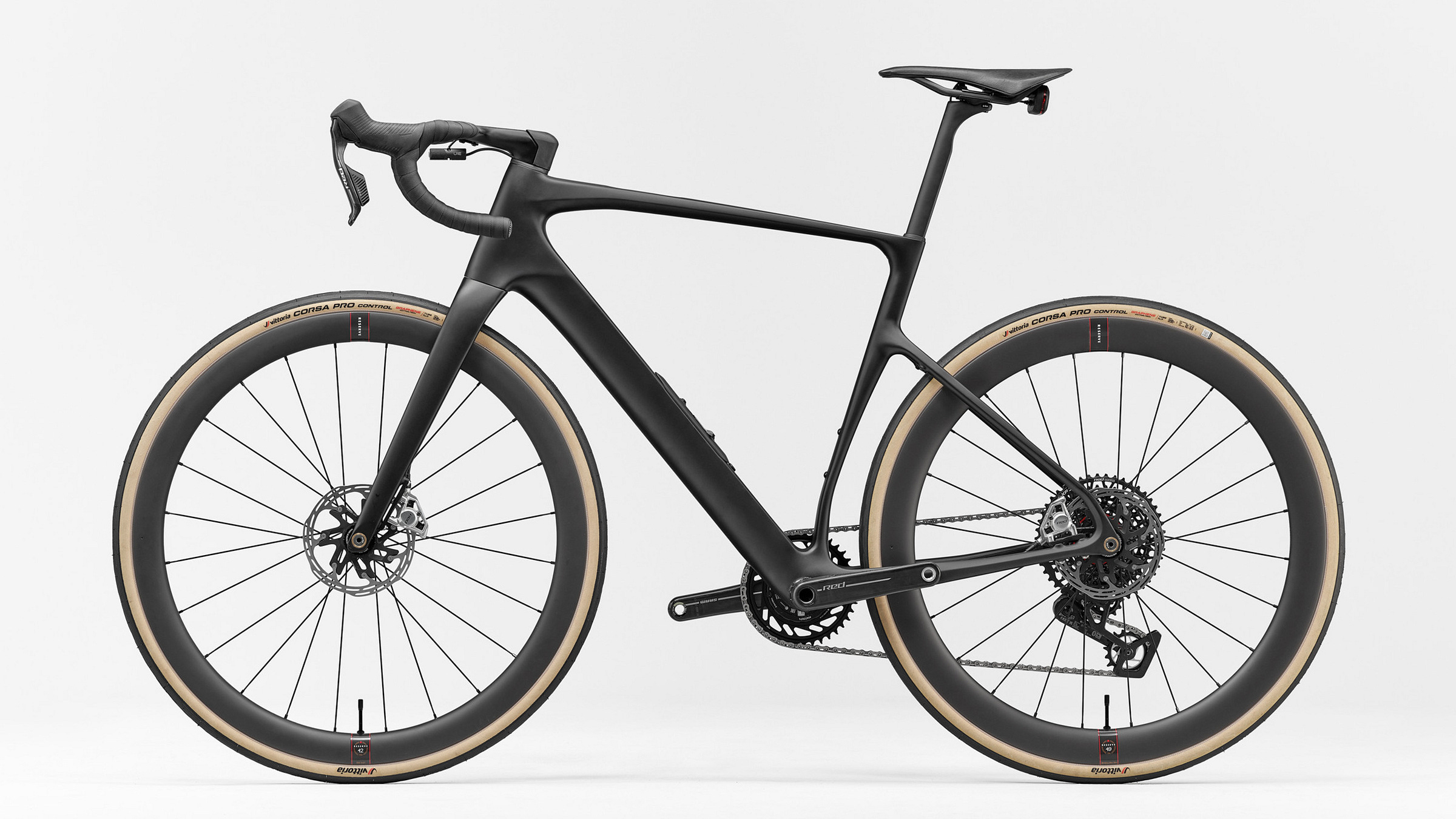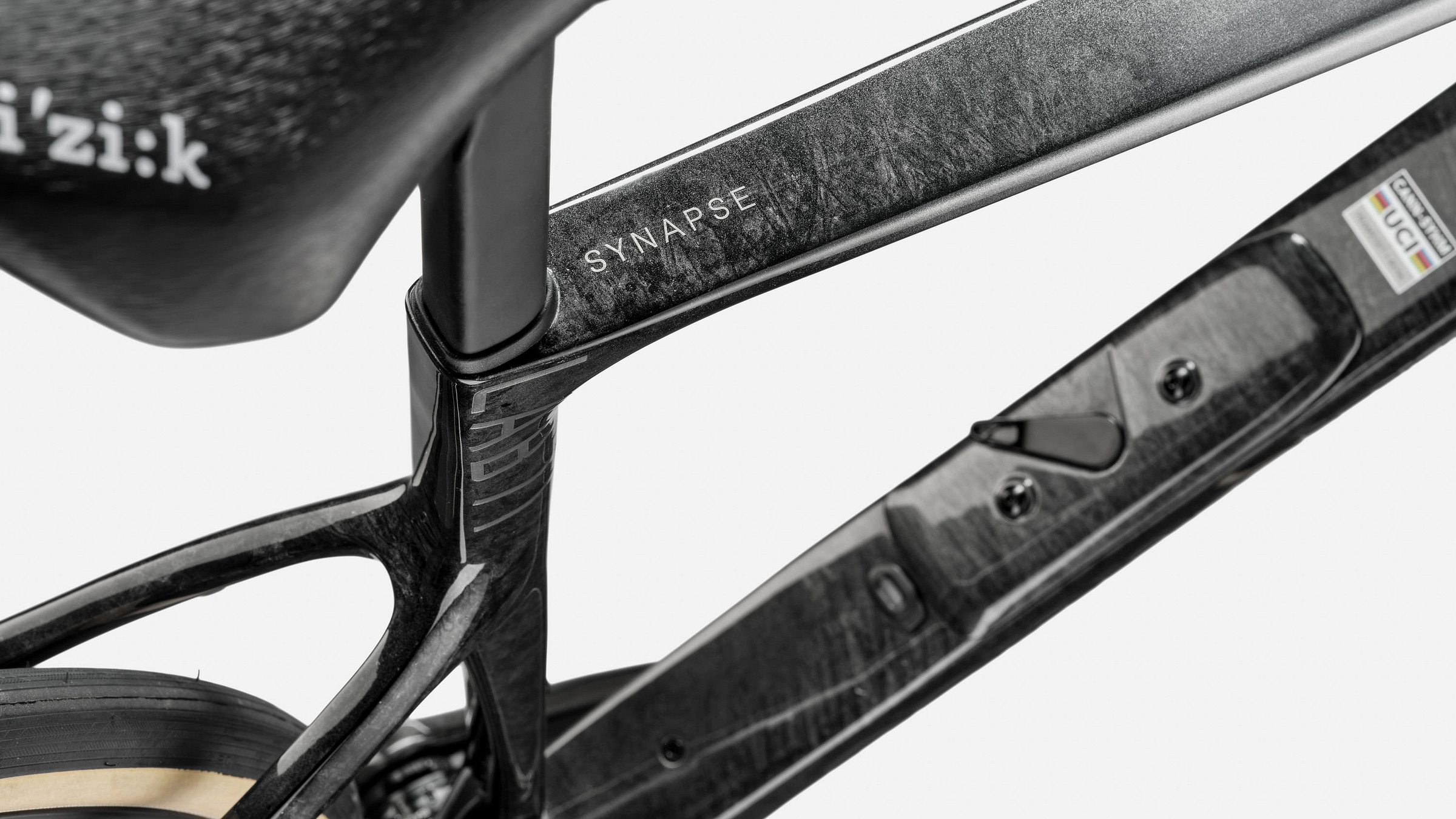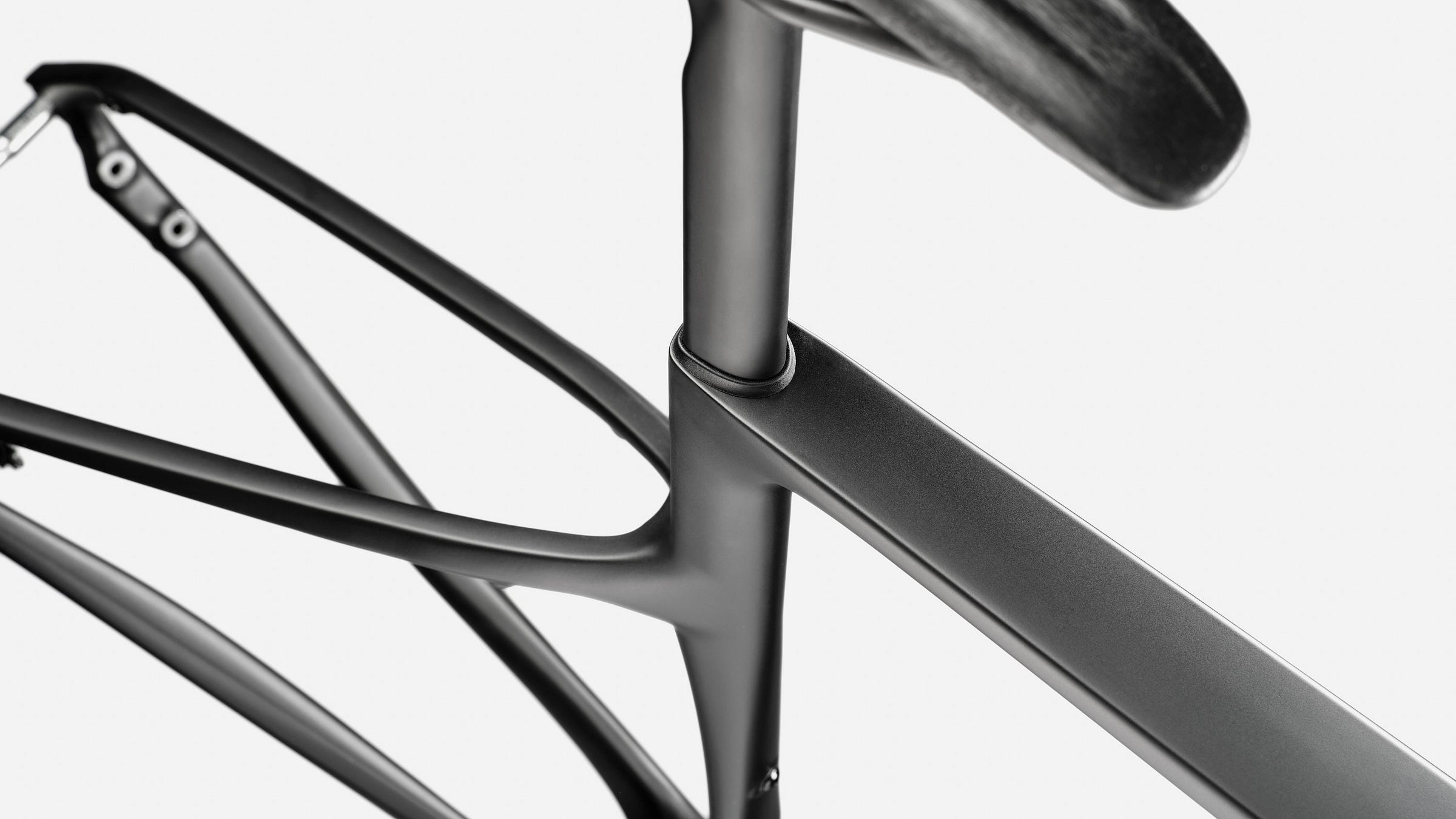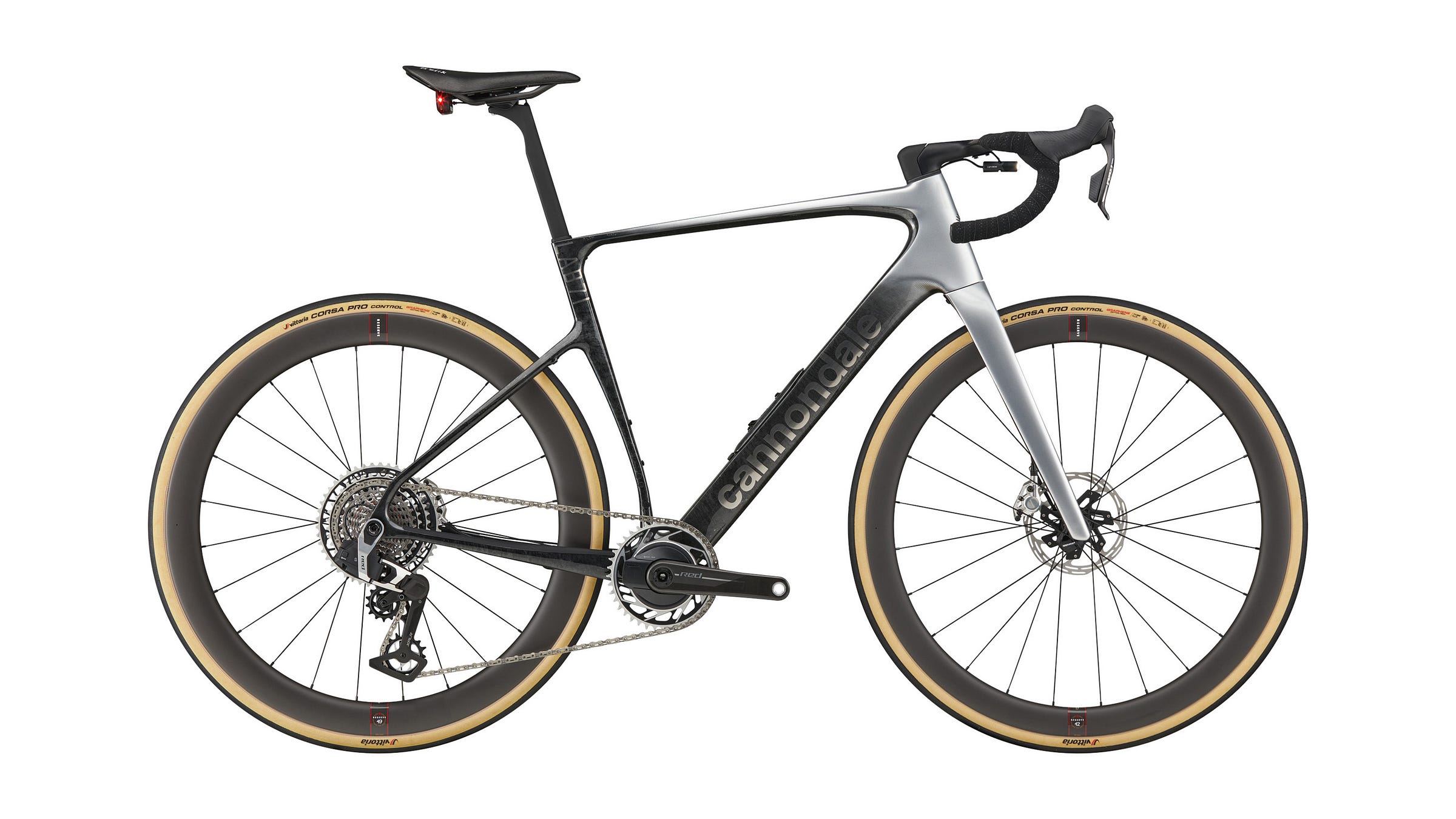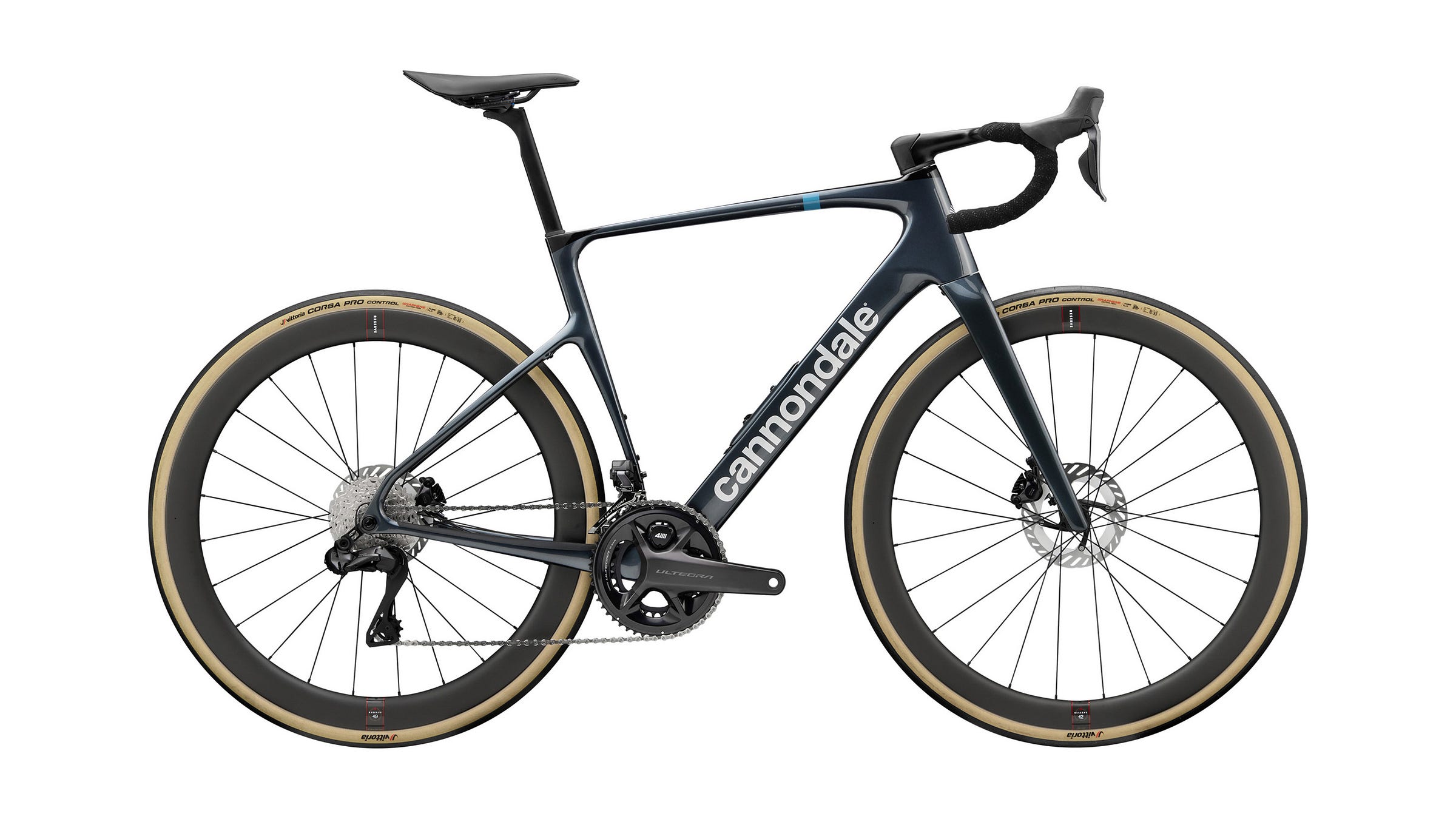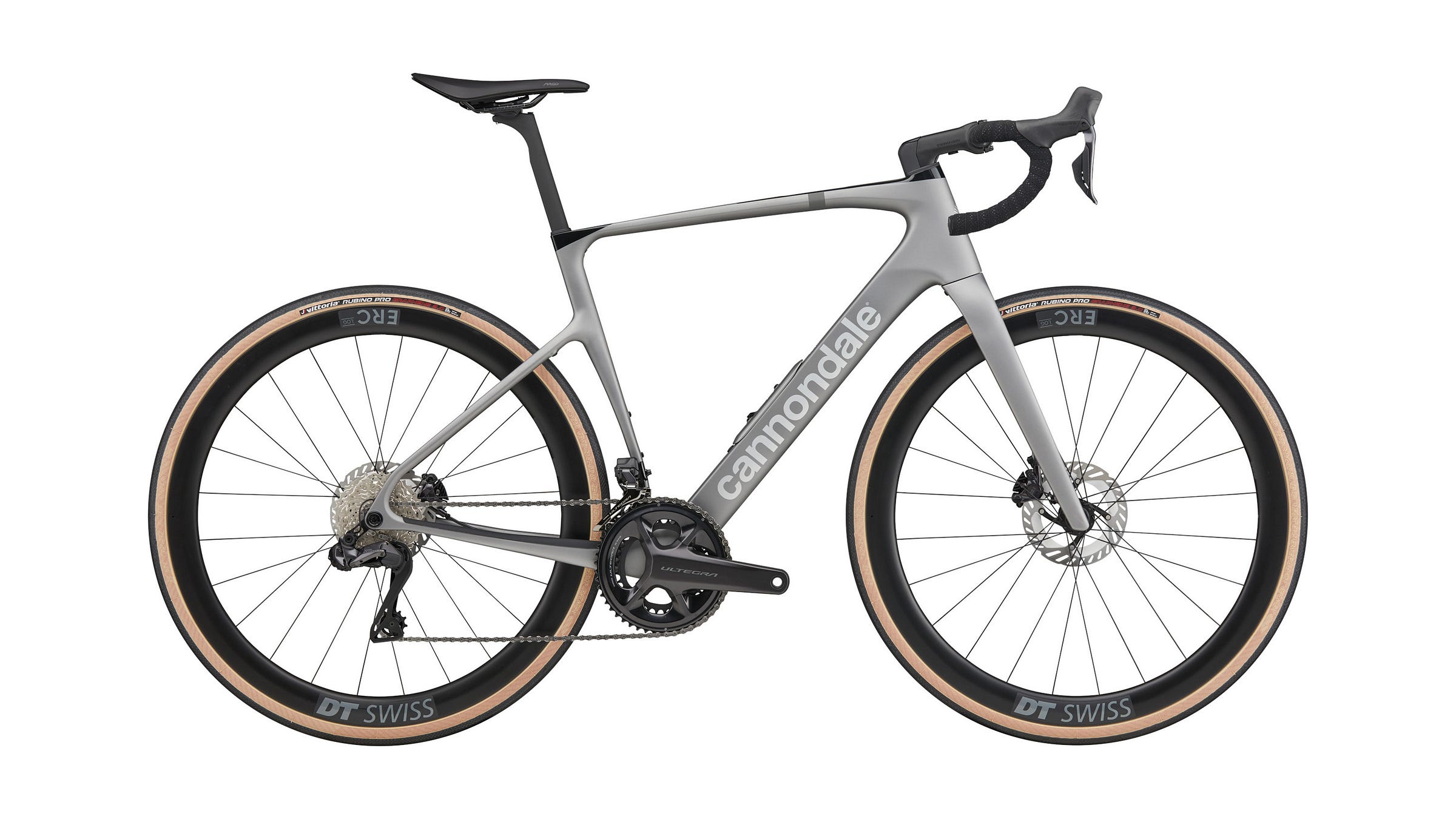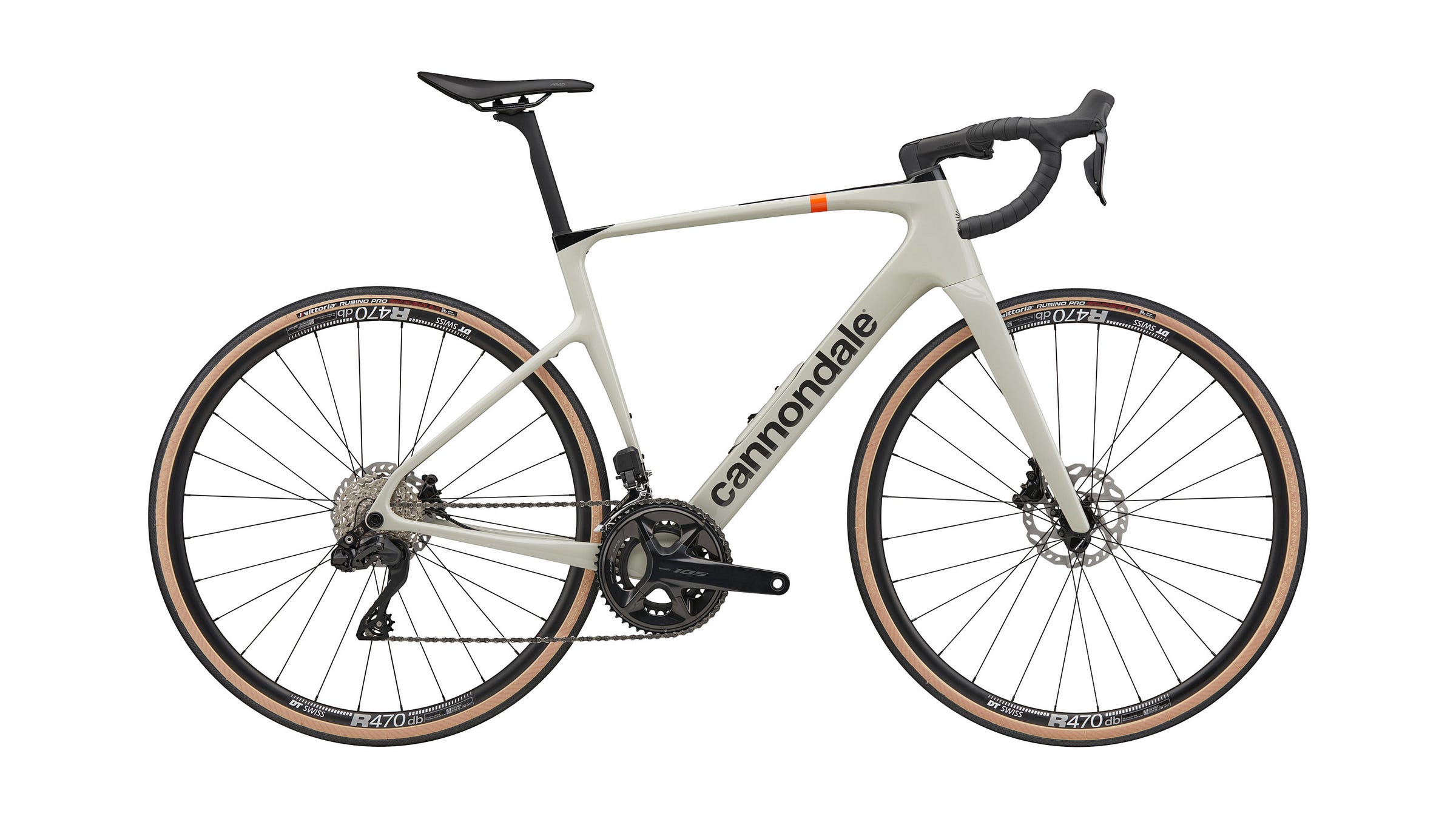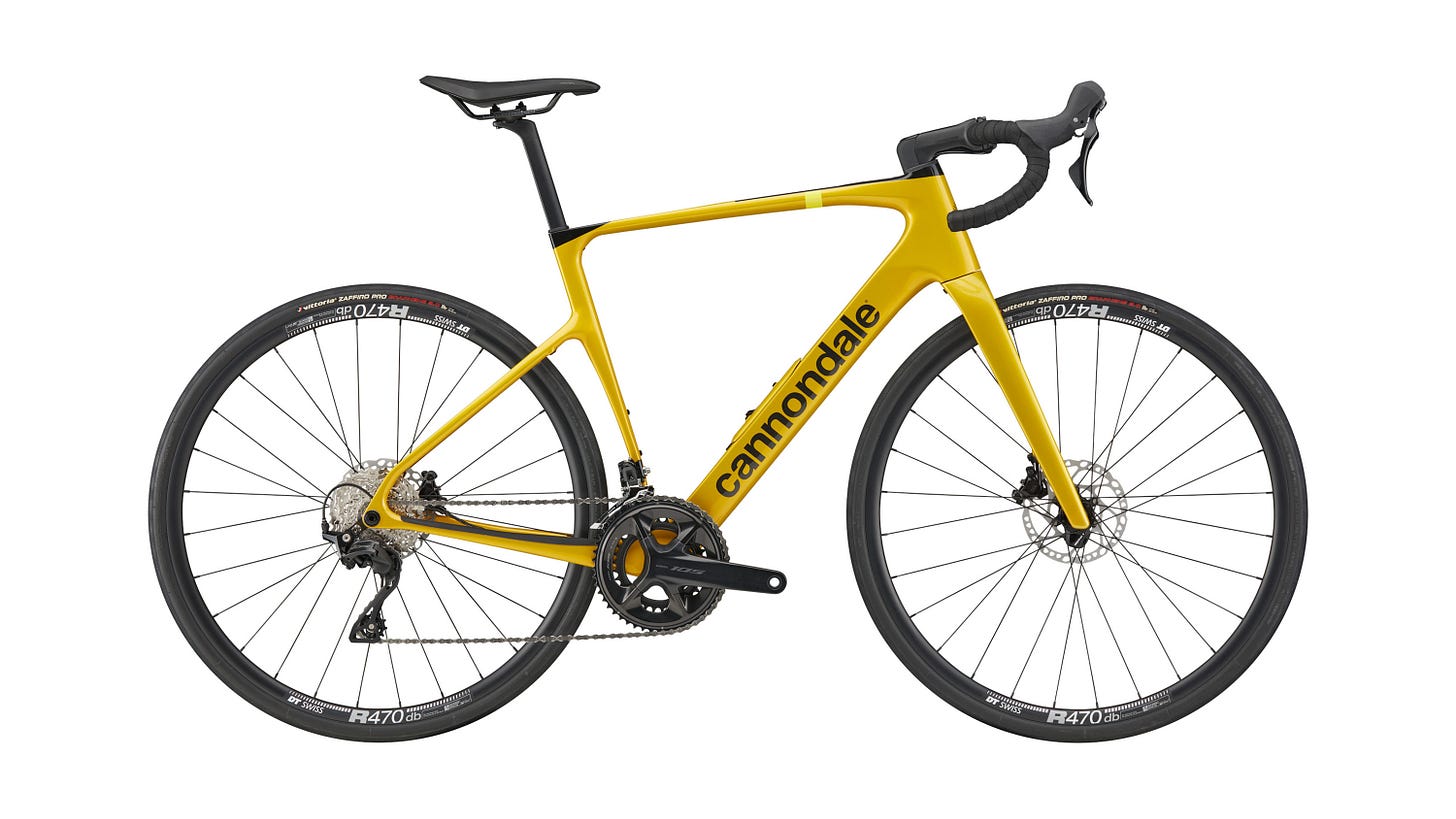The 2025 Cannondale Synapse might just tick all the right boxes
Second time’s the charm for SmartSense?
The Cannondale Synapse endurance road bike has been an crucially important part of the brand’s lineup since it was first introduced way back in 2006. The new sixth-generation Synapse just officially rolled out today, and given how much attention Cannondale has paid to it, it’s clear that bike is just as important to the brand now as it was almost 20 years ago.
Many of the improvements are as you’d expect: It’s lighter, it’s more aerodynamic, it’s comfier, and there’s more tire clearance. It’s also loaded with conveniences like internal frame storage and plenty of accessory mounts. But one thing that you might not have expected is the return of Cannondale's SmartSense suite of integrated lights and radar sensors. Cannondale appears to have learned from its mistakes the first time around, though, and at least at first glance, it feels like the revamped design has a much better chance of setting the new Synapse apart from the rest of the field.
As always, there are caveats, but the list is getting shorter.
SmartSense, the way it always should have been
Cannondale is somewhat notorious for introducing innovative ideas a bit ahead of their time, and the original SmartSense system certainly falls into that category. As usual, the thinking behind it was sound: Since so many road riders were already using front and rear daytime running lights and a rear-facing Garmin radar unit, why not incorporate all of that directly into the bike and power it all with a central battery?
The problem is that the execution was more than a little lacking.
The chunky light and radar units were visually unsightly (especially with the associated rat’s nest of wiring) on what was otherwise a pretty sleek-looking machine, the lights weren’t all that bright, the awkward-looking central battery was externally mounted to the down tube, and yet despite the battery’s bulk, the total run time wasn’t great.
Cannondale perhaps just needed the associated technology to catch up with its vision as SmartSense 2.0 is a massive improvement.
The previous lights were made for Cannondale by Lezyne, with the rear being a custom unit that wrapped around a stock Garmin radar. Cannondale has instead tapped Lightskin for the new headlight, which is not only impressively tiny, but also way brighter than before (with up to 800 claimed lumens instead of 350). Out back, Garmin has made things easy as SmartSense-equipped bikes now use the company’s off-the-shelf Varia eRTL615 unit with its integrated 65-lumen DRL. The mounts for the front and rear lights are also much more cleanly executed than before with almost no visible wiring or hardware. In fact, because the front light now attaches to the stem, there’s nothing extra attached to bars at all.
As with the original SmartSense, both the headlight and rear radar/light unit are still powered a single central battery. However, that battery is now hidden away inside the down tube’s new internal storage compartment, and it has more than twice the capacity of the old one. Claimed run time with the lights at the highest brightness setting is now a much healthier 4 1/2 hours, and keep in mind the headlamp output has more than doubled. That said, most riders will only use the lights in their DRL flashing mode, in which case Cannondale says the battery will keep everything powered for more than 24 hours of continuous use. And in case you want or need even more, you can now hook the battery up to a dynamo hub.
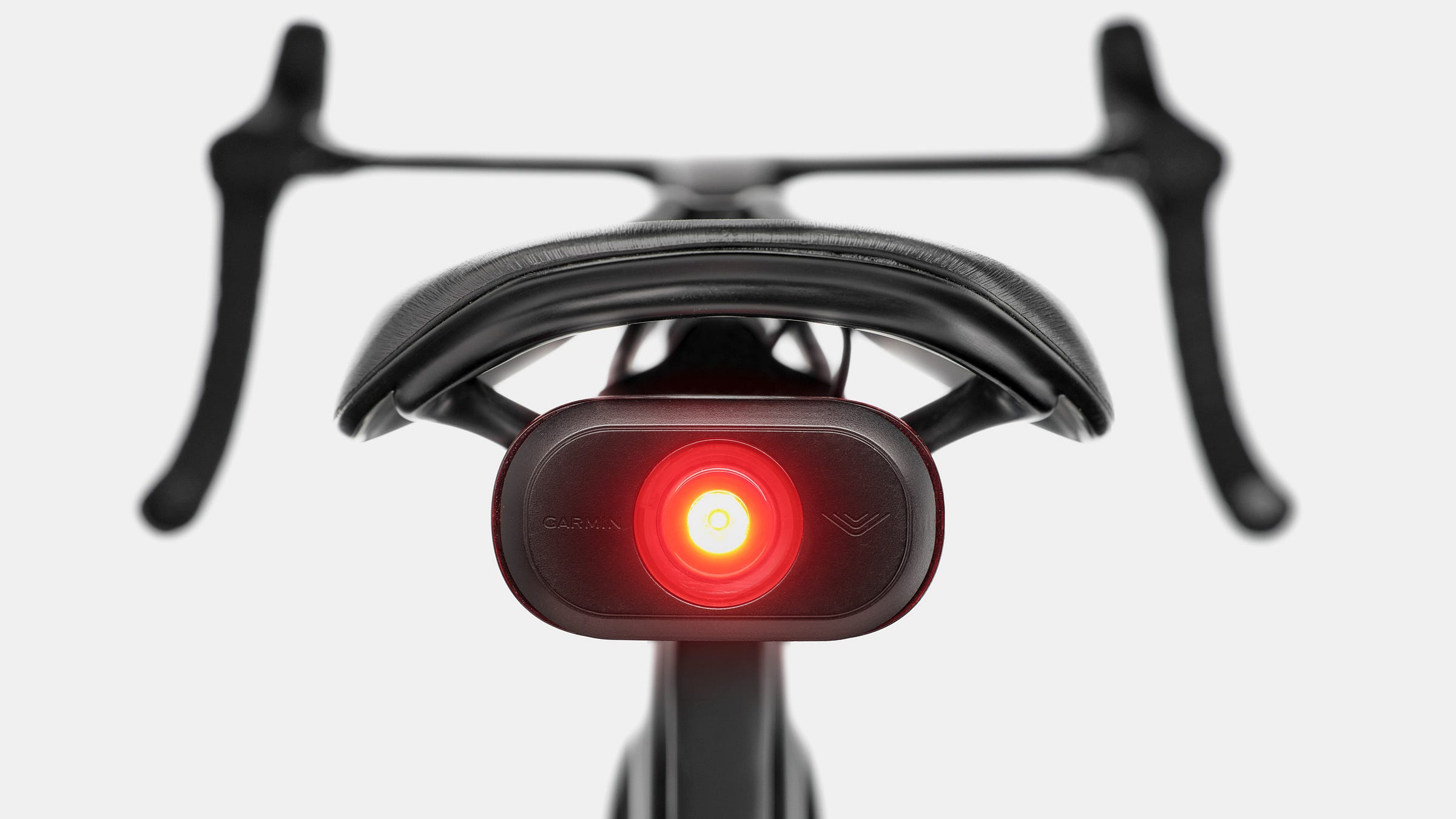
Perhaps most critically, “everything” now finally includes the electronic shifting.
Whereas before the SmartSense battery would only power the accessory lights and radars, now it also feeds juice to the SRAM AXS electronic front and rear derailleurs. Recharging is done via a conventional USB-C port, and if you don’t have a power source nearby, the battery is easily removed. And are you worried about running out of juice and having to ride a singlespeed home? Cannondale says the system is designed such that shifting functionality is the very last thing to go (meaning you should have plenty of warning before you get to that point). Moreover, Cannondale says a SmartSense battery with just 5% charge remaining has the same amount of power as a fully topped-off AXS battery. In short, it shouldn’t be an issue.
This all sounds like how we all wanted SmartSense to be the first time around, no? That seems obvious in retrospect, but according to Cannondale product manager Sascha Demetris, that was easier said than done back then.
“For the battery, it was a mix of technical challenges and the way that we approached the system as a whole,” Demetris told me. “The previous-generation battery could not support shifting at lower battery percentages due to limitations on the instantaneous power draw from the battery. Shifting overall does not require a lot of energy from the battery, but requires a high amount of power for a very short amount of time (a few milliseconds). To meet this, we needed a larger and more powerful battery. For SmartSense Gen. 2 we took a more hands-on approach with designing the battery ourselves to make sure it was more integrated into the bike and supported all of the features that we needed. This came with the tradeoff that it is more difficult to retrofit on to other bike platforms, but more capable and integrated in the bikes that it is designed for.”
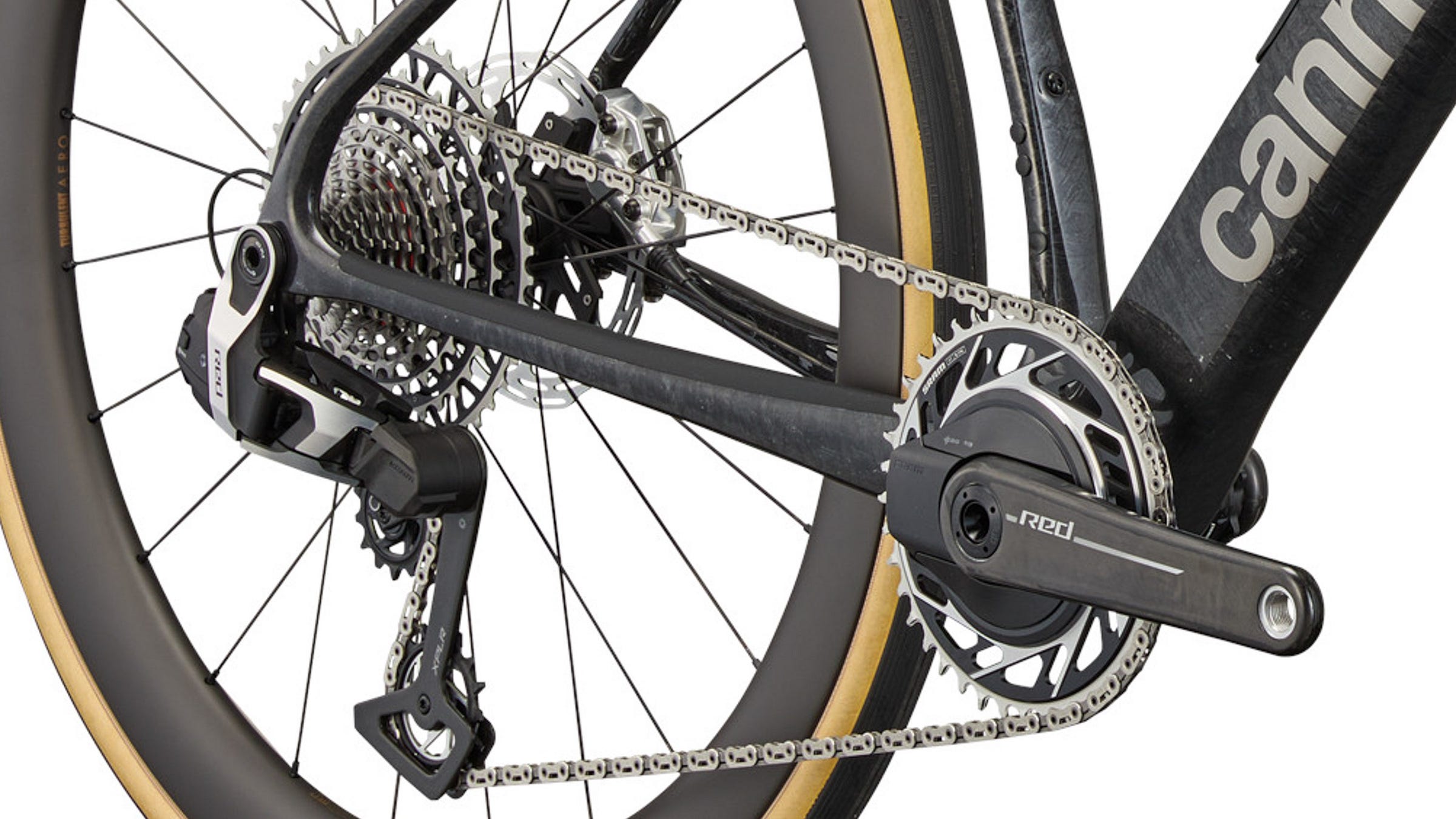
Cannondale has strived to make SmartSense as user-friendly as possible, too. A Bluetooth sensor attached to the front wheel will automatically turn the system on and off, and if you’re using the Cannondale app, it’ll also automatically start recording your ride. In theory, all you have to do is pump up your tires and go. That associated app can also be used to customize all off the SmartSense functions – including turning the automatic features off should you prefer – and with the handy display feature, Cannondale is making a strong argument for using your phone as an on-bike computer.
Speaking of which, you’re going to have to run something on your bars as there’s no longer a handlebar-mounted radar display included. If you don’t want to use your phone, Cannondale says SmartSense is compatible with Garmin, Wahoo, and Hammerhead computers, as well as seemingly anything else that’s compatible with a Garmin Varia setup.
More of the other stuff that you want, too
The Synapse has never seemed entirely comfortable wearing the “endurance road bike” moniker – like it was almost ashamed for being labeled as such and was always striving to crane its nose just slightly above the rest. “Me, an endurance road bike? How dare you?!”
For this sixth-generation Synapse, Cannondale has leaned even harder into the performance side of things.
For one, Cannondale says the carbon fiber frame is a lighter than before, though there are some qualifications that need to be mentioned. Claimed weight for a 56 cm Synapse Hi-Mod frame is now 979 g with paint, plus 445 g for the matching fork (and keep in mind that paint – particularly lighter colors – can easily add more than 100 g). That’s about a 100-gram decrease from the previous Synapse, although that frame wasn’t offered in a Hi-Mod version. Looking at it apples-to-apples, the standard version of the new Synapse frame is actually a bit heavier at 1,143 g plus 494 g for the fork, though it’s also worth remembering the new frame also includes that internal storage compartment so it’s kind of a wash.
One performance gain that’s a little more straightforward is aerodynamic efficiency. Cannondale has finally incorporated aero tube shaping into the Synapse with heavily truncated D-shaped profiles that have a roughly one-to-one depth-to-width ratios so as to not overly disrupt other metrics like weight, stiffness, and ride quality. Last year’s round 27.2 mm-diameter post has also given way to a D-shaped profile, and as you’d expect, cable routing is now fully internal thanks to Cannondale’s triangular-profile Delta steerer tube.
Cannondale didn’t provide numerical specifics like wind tunnel results or CFD simulations, but when you combine all of that with the one-piece carbon fiber cockpits used on the top two Synapse models, the company claims the new bike’s aero performance is on par with the previous-generation SuperSix Evo.

Fans of non-proprietary components will obviously be bummed to hear about the round seatpost going away, but that new D-shaped post – along with some rather radical tube flattening at the base of the seat tube – add up to a roughly 20% boost in seated comfort, according to Cannondale. That flattening will require careful trimming of the seatpost since there’s quite obviously a lot less insertion depth than there used to be, but hey, comfort is comfort, right?
Cannondale at least hasn’t created yet another seatpost shape for the Synapse. It’s the same one used on the company’s SuperSix Evo, and in fact, several small parts such as the thru-axles and derailleur hangers are shared with other Cannondale road models, too.
It’s not a gravel bike… but it sort of could be
As is practically the requirement these days, the new Synapse has more tire clearance than the old one. Officially, there’s room for a 700x48 mm tire up front and a 700x42 mm out back. That’ll invariably lead some folks to ponder whether the Synapse could serve double-duty as a gravel bike in smoother and/or drier conditions, but those considerations should come with a word of warning. As is typical for Cannondale recently, those claimed maximum tire sizes are based on just 4 mm of clearance between the tire and frame/fork, so it’d be best to keep your local conditions in mind.
I personally wouldn’t be overly concerned about running a set of 40s on a Synapse for all the dirt roads I have around me, but I’d think twice about going any bigger. Regardless of the stated maximums, Cannondale fits stock bikes with 32s, which should give you some indication of how the company ultimately intends the bike to be used.
Clearance questions aside, the new Synapse scores pretty high on the versatility front. Hidden fender mounts are included front and rear, there are mounts on the top tube for a bag, and that Stashport internal storage compartment might still have enough room for your repair essentials even with that battery mounted below it. Speaking of which, remember how I said the SmartSense battery pack is now mounted inside the down tube? That unfortunately eats up some storage volume, but Cannondale has included a little light that fires up automatically when you open the Stashport hatch to make it easier to find your stuff. That part seems a little gimmicky to me (I would have rather Cannondale just used a light-colored interior like so many gear bags out there), but it at least shows some attention to detail.
Drivetrain-wise, that internal routing will accommodate both electronic and mechanical drivetrains (though I’d anticipate mechanical shifting performance to be so-so at best given the convoluted housing paths), and Cannondale has wisely outfitted the rear end of the Synapse with a SRAM Universal Derailleur Hanger for maximum derailleur compatibility moving forward.
Cannondale has made some smart moves with rotor sizing, too. While the rear flat-mount holes are sized for the industry standard 140 or 160 mm rotor diameters, the fronts are positioned for 160 or 180 mm ones. Fitted stock are 160 mm rotors front and rear.
Steady as she goes
Cannondale has made some interesting changes in terms of frame geometry. While the company goes to great lengths to emphasize how much the new Synapse is like a full-blown race bike, that apparently doesn’t extend to the handling, which remains on the sportier side of things but is nevertheless more toned-down than it used to be.
Head tube angles have slackened a fairly dramatic 0.4-2.1°, depending on size. However, thanks to an increase in fork rake up to 55 mm across the board, trail dimensions only increase slightly from 56-59 mm up to 61-64 mm. Even so, the front centers have stretched up to 34 mm on the largest size, chainstays have grown 10-15 mm, and wheelbases have extended 14-49 mm. Taken in total, this should still retain responsive steering, but more stability in general given the longer overall bike lengths. Put another way, even if you stick a massive rudder on a cargo ship, it’ll still take a bit to get the thing turned around.

While the handling of the new Synapse may be somewhat tempered from what it used to be, riders coming off of older models will at least find that their fits won’t change the slightest bit. Stack and reach dimensions are identical to the millimeter across the board, as is the 73° seat tube angle. Standover height is a hair taller than it used to be, but the bottom bracket drop is unchanged at 70-75 mm.
Finally, shorter riders who previously couldn’t quite get the 48 cm size to fit properly will be happy to see Cannondale has added a new 44 cm option – still with full-sized 700c wheels.
Models and pricing
Cannondale is rolling out the sixth-generation Synapse in seven complete models to start.
The flagship Synapse LAB71 gets all the bells and whistles, including the top-end Hi-Mod frame and fork, SmartSense 2.0, a SRAM Red XPLR AXS 1x13 wireless electronic groupset, Cannondale’s SystemBar R-One one-piece integrated carbon fiber cockpit, and Reserve 42|49 Turbulent Aero carbon rims rotating on DT Swiss 180 hubs and wrapped with 32 mm-wide tubeless-ready Vittoria Corsa Pro Control tires. Claimed weight is 8.37 kg (18.45 lb), and retail price is US$16,500 / €15,800.
The Synapse LAB71 will also be offered as a frameset including the frame, fork, headset, and seatpost for US$6,000 / €5,800.
Next up is the Synapse Carbon 1. This features the same frame, fork, and cockpit as the LAB71, but comes outfitted with a Shimano Ultegra Di2 wiredless electronic groupset, and the Reserve 42|49 Turbulent Aero carbon wheels are built on DT Swiss 350 hubs instead of 180 ones. Notably, this bike does not come with SmartSense.
Cannondale didn’t provide a claimed weight for this one, but retail price is US$9,400 / €9,200.
The Synapse Carbon 2 is the first model built on the standard carbon frame. Like the Synapse Carbon 1, it’s also outfitted with a Shimano Ultegra Di2 wiredless electronic groupset, but similarly does without the additional SmartSense package. Wheels are built with DT Swiss ERC 45 carbon rims and DT Swiss 370 hubs, and up front you’ll find a more conventional two-piece cockpit with a Vision Trimax Aero aluminum bar.
Claimed weight is 8.39 kg (18.50 lb), and retail price is US$7,500 / €7,200.
The Synapse Carbon 4 trades the Ultegra Di2 stuff for 105 Di2, and also rolls on more basic wheels built with DT Swiss R470 aluminum rims and Shimano RS470 hubs. Claimed weight is 9.03 kg (19.91 lb) and retail price is US$4,600 / €4,500.
Finally, there’s the Synapse Carbon 5, which is mostly identical to the Synapse Carbon 4 save for the Shimano 105 mechanical groupset. Claimed weight is 9.49 kg (20.92 lb) and retail price is US$3,600 / €3,500.
Hold on just a second here.
Where’s the Synapse Carbon 3? And if Cannondale thinks its new SmartSense stuff is all that, why is it only featured on one complete bike? Part of the explanation is technical as the SmartSense battery still doesn’t work with Shimano Di2 derailleurs. Unfortunately, the more complete explanation will have to wait a bit. I can’t reveal much, but let’s just say there’s more to come in a few weeks.
Also, retail pricing and availability in UK and AU regions are still to be confirmed.
Caveats
The Synapse has been an immensely popular bike in the Cannondale range, and from what I can tell right now (I should point out I haven’t had a chance to ride the new bike yet), there’s a lot to like here. The combination of lower weight, a smoother ride quality, and better aerodynamic efficiency is hard to argue with, and at least to my eye, it looks pretty sharp, too.
At least for me, SmartSense makes a lot of, uh, sense. I never head out on a road ride these days without my Garmin Varia, and almost never without a forward-facing DRL, too – and given that I also hate having to charge a gazillion different batteries, the thought of only having to deal with one central battery is super appealing. In other words, I’m pretty much the target market here, though I suspect I’m not alone. It certainly doesn’t hurt that this second-generation SmartSense package comes across as vastly more refined than Cannondale’s first attempt, too.
That all said, there are a few things that make me wonder a bit here.
Keep reading with a 7-day free trial
Subscribe to n-1 to keep reading this post and get 7 days of free access to the full post archives.






